Lesicheri Obelisk – Enigmatic Ancient Roman Structure – Bulgaria’s Tallest Surviving Landmark
A. Sutherland - AncientPages.com - A remarkable landmark, a surviving 14-meter ancient Roman Obelisk is located near the Veliko Tarnovo district village of Lessicheri in the North-Central region of Bulgaria.
The Lesicheri pillar and the ruins of the second one (after Kanitz 1882, 5, engraving # 2). The Lesicheri Pillar and the Transfer of Funerary Architecture Trends from Bithynia to Roman Thrace - D. Delchev, Milena Raycheva
Following the first scholarly publication in 1882, the so-called Lesicheri Obelisk, located near a historic site Nicopolis ad Istrum has been widely discussed in the literature as a component of a more extraordinary complex related to a religious cult or could be sepulchral.
The thousand-year-old history and culture of the region of Tarnovo are traced out there.
Veliko Tarnovo - the capital of Bulgaria in the 12th- 14th century - is one of the oldest settlements in Bulgaria, with a history of more than five millennia. The first traces of human presence, dating from 3,000 BC, were discovered on Trapezitsa Hill.
Ancient Roman Obelisk, one of two originally, was part of a mausoleum-turned-shrine near Bulgaria's Lesicheri. Once, a second identical obelisk existed nearby, and its ruins were identified by visiting geographers and archaeologists in the late 19th century.
This remarkable 13.8-meter column of painstakingly hewn blocks of local stone is also part of the memorial tomb of Quintus Julius, a prominent Roman figure from the nearby large city of Nicopolis ad Istrum, who lived in the 2nd century AD, according to an ancient inscription.
Quintus Julius was a Roman senator who held several posts in the emperor's service. Both the emperors Claudius and Nero well thought of this prestigious individual.
He was also a prominent supporter of a Roman emperor, Vespasian, who reigned from AD 69 to 79. From history books, we remember him as the fourth and last emperor who reigned in the Year of the Four Emperors. Quintus Julius was rewarded by being made consul only a few months after Vespasian arrived in Rome. Emperor Vespasian needed Quintus Julius' assistance and trusted him. Later, Quintus held other civic and military positions, including three governorships, pontifex, and urban prefect of Rome.
Roman Obelisk, Lesicheri, Bulgaria. Image credit: Powerfox - CC BY-SA 4.0
Felix Philipp Kanitz (1829 – 1904) was an Austro-Hungarian geographer, ethnographer, and archaeologist, who conducted a thorough research of the South Slavs, particularly those in modern Serbia and Bulgaria. Kanitz carefully examined the Obelisk area and found and described the remains of a second, destroyed pillar on which the stones lay on the ground. He also examined a fragmentary inscription found near the Lesicheri pillar and sketched it. Unfortunately, the document was lost.
The scientists also discovered fragments of marble reliefs and parts of a large monumental building that once existed there.
According to his research, the Bulgarians from the surrounding villages used to call the monument "Pillar" while the Turkish name was "Dikilitash" (Obelisk). Kanitz associated the structure with the Roman building style and mistakenly assumed the Lesicheri Obelisk was a part of the Roman aqueduct.
Legend Of Two Boys Who Were In Love With The Same Girl
Putting history aside, one can also mention the legend of the Lesicheri column.
Locals say the Obelisk is Markov Kamak or The Stone of Marko. According to the story, Marko and another boy were in love with the same girl.
The young woman liked the other man better than Marko but decided to set up a competition for her two suitors. She said she would marry the one who could build the tallest and strongest pillar. Marko was a powerful man who constructed a magnificent massive pillar for the young lady. The other boy was not a skilled builder, and his creation was far less impressive. Marko won the competition, but the girl still wanted to marry the other boy and announced him as the winner. Marko was furious and smashed his rival's small Obelisk in rage before walking away. The legend explains what happened to the other Obelisk, but history tells a different story.
Were The Two Obelisks Related To Emperor Trajan's Triumph Over The Dacians?
Later in the 19th century, it was theorized that two obelisks belonged to a colonnade built at the beginning of the 2nd century to honor the triumph of Emperor Trajan (98-117) over the Dacians. Several decades later, the enigmatic remains of one of the obelisks were almost lost forever. In 1937, locals used the broken pillar and the surrounding fragments to construct a local road. In 1948, the taller column (we can see today) was also in danger of being totally devastated when the villagers tried to remove it with ox carts or blow it up.
Fortunately, they failed.
The Obelisk and its long-lost twin structure belonged to the family mausoleum of Quintus Julius, a cult priest to the emperor and a Roman senator who held several posts in the emperor's service and lived in the 2nd century in Nicopolis ad Istrum, near the modern Nikyup village.
Proper excavations of the site began in the 1990s, and it was then that the Obelisk was adequately explained.
The Obelisk and its long-lost twin structure belonged to the family mausoleum of Quintus Julius, a cult priest to the emperor and a Roman senator who held several posts in the emperor's service and lived in the 2nd century in Nicopolis ad Istrum, near the modern Nikyup village.
The mausoleum was an impressive complex with a pediment of stone, and two statues of lions guarded its entrance. There were probably statues of the deceased, together with one of the Thracian God Rider (also the "Thracian horseman" (or "Thracian Rider"), a motif frequently used in reliefs of the Hellenistic and Roman periods in the Balkans, mainly Thrace, Macedonia, Thessaly, from the 3rd century BC to the 3rd century AD. The temple survived until the 4th century. Then, it was most probably destroyed by some fanatics when the Roman Empire was Christianized. There were times when barbarian invasions still plagued the provinces in today's Northern Bulgaria.
The Lesicheri Obelisk - Bulgaria's tallest surviving landmark still stands and guards its history.
Written by – A. Sutherland - AncientPages.com Senior Staff Writer
Copyright © AncientPages.com All rights reserved. This material may not be published, broadcast, rewritten or redistributed in whole or part without the express written permission of AncientPages.com
Expand for referencesMore From Ancient Pages
-
 Strange Ancient Abduction Case And Mysterious Journey To A Snake King’s Palace In A Parallel World
Ancient Mysteries | May 1, 2021
Strange Ancient Abduction Case And Mysterious Journey To A Snake King’s Palace In A Parallel World
Ancient Mysteries | May 1, 2021 -
 3,500-Year-Old Tomb Of Egyptian Goldsmith Discovered
Archaeology | Sep 10, 2017
3,500-Year-Old Tomb Of Egyptian Goldsmith Discovered
Archaeology | Sep 10, 2017 -
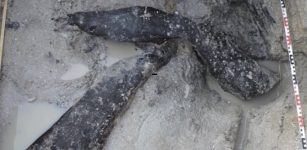 Discovery Of Half-Million-Year-Old Wooden Structure Shows We’re Wrong To Underestimate Our Ancient Relatives
Featured Stories | Oct 10, 2023
Discovery Of Half-Million-Year-Old Wooden Structure Shows We’re Wrong To Underestimate Our Ancient Relatives
Featured Stories | Oct 10, 2023 -
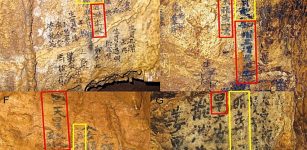 ‘Graffiti’ Found On The Walls Of Dayu Cave, China
News | Aug 25, 2015
‘Graffiti’ Found On The Walls Of Dayu Cave, China
News | Aug 25, 2015 -
 Skofnung – Formidable Sword With Supernatural Powers That Belonged To Legendary Danish King Hrólf Kraki
Featured Stories | Mar 3, 2018
Skofnung – Formidable Sword With Supernatural Powers That Belonged To Legendary Danish King Hrólf Kraki
Featured Stories | Mar 3, 2018 -
 Extraordinary Biblical Frescos Uncovered In Domitilla Catacombs
Archaeology | Jun 3, 2017
Extraordinary Biblical Frescos Uncovered In Domitilla Catacombs
Archaeology | Jun 3, 2017 -
 Egyptian Priest Sonchis Of Sais And His Story About Atlantis – Were The Shemsu Hor Survivors Of A Great Catastrophe That Ended The Ice Age?
Ancient Mysteries | Jun 8, 2017
Egyptian Priest Sonchis Of Sais And His Story About Atlantis – Were The Shemsu Hor Survivors Of A Great Catastrophe That Ended The Ice Age?
Ancient Mysteries | Jun 8, 2017 -
 Mystery Of The Wizard Clip – Unexplained Half-Moon Clippings And Supernatural Phenomena West Virginia
Featured Stories | Jul 15, 2024
Mystery Of The Wizard Clip – Unexplained Half-Moon Clippings And Supernatural Phenomena West Virginia
Featured Stories | Jul 15, 2024 -
 Never-Before-Seen Amazon Rock Art Reveal People Lived With Giant Ice Age Animals
Archaeology | Dec 5, 2020
Never-Before-Seen Amazon Rock Art Reveal People Lived With Giant Ice Age Animals
Archaeology | Dec 5, 2020 -
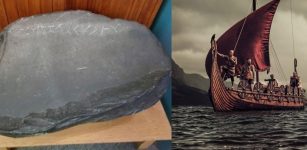 Does Yarmouth Runic Stone Describe A Trans-Atlantic Viking Voyage?
Artifacts | Oct 22, 2018
Does Yarmouth Runic Stone Describe A Trans-Atlantic Viking Voyage?
Artifacts | Oct 22, 2018 -
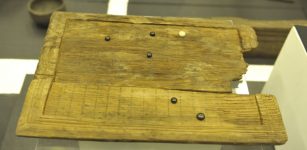 Unique More Than 1,600-Year-Old Board Game With Pieces Recovered From Roman Soldier’s Tomb
Archaeology | Jan 6, 2018
Unique More Than 1,600-Year-Old Board Game With Pieces Recovered From Roman Soldier’s Tomb
Archaeology | Jan 6, 2018 -
 Ogham: Unique Celtic Alphabet Used By Druids And Abandoned During Christian Era
Featured Stories | Jul 9, 2021
Ogham: Unique Celtic Alphabet Used By Druids And Abandoned During Christian Era
Featured Stories | Jul 9, 2021 -
 Long History Records Of Medicine In Mesopotamia And Sumer
Civilizations | Nov 20, 2017
Long History Records Of Medicine In Mesopotamia And Sumer
Civilizations | Nov 20, 2017 -
 Ancient Egyptian Blue Powder Makes Fingerprints Glow And Will Be Used By Crime Scene Investigators
Ancient Technology | Jun 15, 2017
Ancient Egyptian Blue Powder Makes Fingerprints Glow And Will Be Used By Crime Scene Investigators
Ancient Technology | Jun 15, 2017 -
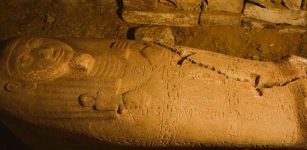 Sarcophagus Of King Ramses II’s Head Of Treasury Found In Saqqara, Giza
Archaeology | Sep 20, 2022
Sarcophagus Of King Ramses II’s Head Of Treasury Found In Saqqara, Giza
Archaeology | Sep 20, 2022 -
 Horrifying Flying Head That Terrorized The Iroquois
Featured Stories | Sep 17, 2019
Horrifying Flying Head That Terrorized The Iroquois
Featured Stories | Sep 17, 2019 -
 History Of The Saltire – Scotland’s National Flag And World’s Oldest Sovereign Flag
Featured Stories | Apr 3, 2016
History Of The Saltire – Scotland’s National Flag And World’s Oldest Sovereign Flag
Featured Stories | Apr 3, 2016 -
 Mississippi’s Mounds Built By The Indigenous People Are Incredibly Important Landforms – Scientists Say
Archaeology | Jul 25, 2023
Mississippi’s Mounds Built By The Indigenous People Are Incredibly Important Landforms – Scientists Say
Archaeology | Jul 25, 2023 -
 Nomadic People’s 1,500-Year-Old Imperial Worship Unearthed In Hohhot, Inner Mongolia
Archaeology | Nov 18, 2020
Nomadic People’s 1,500-Year-Old Imperial Worship Unearthed In Hohhot, Inner Mongolia
Archaeology | Nov 18, 2020 -
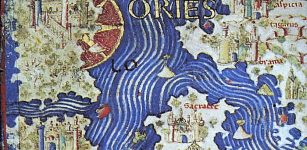 Fra Mauro Medieval Map: Accurate And Detailed Work Attesting To Advanced Geographic Knowledge Of Contemporary Cartographers
Artifacts | Feb 8, 2019
Fra Mauro Medieval Map: Accurate And Detailed Work Attesting To Advanced Geographic Knowledge Of Contemporary Cartographers
Artifacts | Feb 8, 2019



